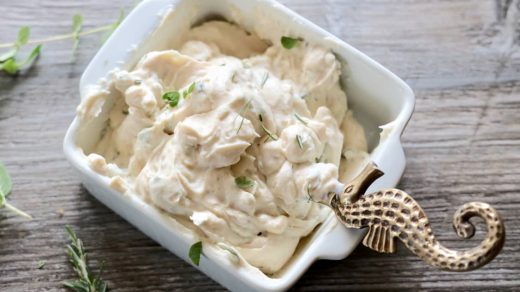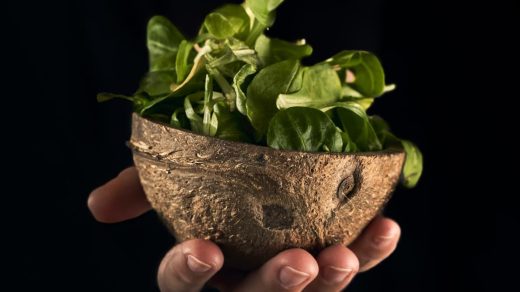When it comes to smoking brisket, timing is everything. The phrase “low and slow” isn’t just barbecue jargon—it’s the fundamental principle for transforming tough brisket into a tender, juicy masterpiece.
Understanding how long to smoke a brisket per pound is crucial for both planning your cookout and achieving that perfect bark, smoke ring, and melt-in-your-mouth texture that makes this cut legendary.
While most pitmasters know to cook until a probe slides in “like butter” or until the internal temperature reaches between 180°F and 200°F, this doesn’t help much when you need to serve a meal at a specific time.
The simple truth is that at the standard smoking temperature of 225°F, you’ll need approximately 1.5 to 2 hours per pound of brisket. However, this is merely a starting point, as numerous factors can affect the actual cooking time.
How Long to Smoke a Brisket Per Pound?

In this comprehensive guide, we’ll break down everything you need to know about brisket smoking times, factors that influence cooking duration, techniques to speed up the process without sacrificing quality, and provide specific time estimates for briskets of all sizes.
Whether you’re smoking your first brisket or looking to refine your technique, this guide will help ensure your next barbecue is a smoky success.
How Long to Smoke a Brisket Per Pound?
The time required to smoke a brisket properly depends primarily on two factors: the temperature of your smoker and the weight of your brisket. At the standard smoking temperature of 225°F, you’ll need approximately 1.5 to 2 hours per pound of brisket.
This means:
- A 10-pound brisket will take roughly 15-20 hours
- A 12-pound brisket will need about 18-24 hours
- A 15-pound brisket could require 22-30 hours
Remember: These are estimates, not exact times. Every piece of meat cooks differently based on its unique composition and fat content. Always use internal temperature and the probe test as your primary methods for determining doneness.
If you’re working with a higher smoking temperature, your per-pound cooking times will decrease:
- At 250°F: 1 to 1.5 hours per pound
- At 275°F: 45 minutes to 1 hour per pound
- At 300°F: 30 to 45 minutes per pound
How Many Hours Per Pound to Smoke a Brisket??
While the hours-per-pound method provides a useful guideline, it’s important to understand that it’s not an exact science. Here’s a helpful reference table showing how temperature affects cooking time:
| Smoker Temperature | Hours Per Pound | Example: 12lb Brisket |
|---|---|---|
| 225°F | 1.5-2 hours | 18-24 hours |
| 250°F | 1-1.5 hours | 12-18 hours |
| 275°F | 45min-1 hour | 9-12 hours |
| 300°F | 30-45 minutes | 6-9 hours |
Important note: Always allow extra time in your schedule for the unexpected. Briskets are notorious for “stalling” (when the internal temperature plateaus), which can add hours to your cooking time. It’s better to finish early and hold the brisket at serving temperature than to have hungry guests waiting for meat that’s not ready.
Other Factors to Consider
The cooking temperature and brisket weight aren’t the only variables that affect cooking time. Several other important factors can significantly impact how long your brisket takes to cook:
- Brisket size and thickness: Larger, thicker briskets take longer to cook per pound because heat needs more time to penetrate to the center.
- Fat content: More marbling and a thicker fat cap can speed up cooking time. Prime grade briskets with more marbling typically cook faster than Select grade briskets.
- Weather conditions: On a cold, windy day, your brisket might take over 2 hours per pound, while on a warm, still day, it might cook more quickly.
- Smoker type: Different smokers have varying levels of temperature consistency:
- Electric and gas smokers provide consistent heat
- Offset smokers may have temperature fluctuations
- Ceramic kamado-style smokers hold heat well
- Lid opening: Every time you open the smoker, you release heat and extend cooking time.
- Starting meat temperature: Bringing your brisket to room temperature before smoking can reduce cooking time.
Fat Side Up or Down?
While the fat orientation won’t dramatically affect your cooking time, it does impact the final product:
Fat Side Up:
- Pros: Fat supposedly “bastes” the meat as it renders
- Best for: Smokers where the heat comes from above
Fat Side Down:
- Pros: Creates a protective barrier between the meat and direct heat
- Best for: Smokers where the heat comes from below
- Results in: Better bark formation and prevents meat from sticking to grates
For most home smokers, fat side down is often the better choice because heat typically comes from below. The fat acts as insulation, preventing the bottom of the brisket from drying out or burning.
How Long to Cook a Small Brisket?
Smaller briskets (under 5 pounds) require more attention because they can easily overcook:
- Check the temperature more frequently
- Expect faster cooking times per pound
- Consider lowering your smoker temperature slightly to 215-220°F
- Be especially vigilant during the final stages of cooking
When smoking a small brisket flat (which has less fat than the point), you’ll need to be particularly careful about preventing it from drying out. Consider using a water pan in your smoker and possibly spritzing the meat occasionally.
Ways to Shorten the Cooking Time
Sometimes, you need your brisket done sooner rather than later. Here are effective methods to speed up the process:
The Texas Crutch Method
- Smoke the brisket unwrapped until it reaches the “stall” (around 150-170°F)
- Remove from the smoker and wrap tightly in:
- Aluminum foil: Faster cooking, but less bark development
- Pink butcher paper: Slightly slower than foil, but better bark and smoke flavor
- Return to the smoker and continue cooking until done
Time saved: 2-4 hours on a standard-sized brisket
Hot and Fast Method
This technique abandons the traditional low-and-slow approach:
- Preheat smoker to 350°F
- Place brisket fat side down initially
- Wrap in foil when internal temperature reaches 170°F
- Return to smoker fat side up
- Cook until internal temperature reaches 203°F
Time saved: Up to 50% compared to traditional methods
Oven Finish Method
- Smoke the brisket for 4-6 hours to develop flavor
- Transfer to oven at 250-275°F in a covered roasting pan
- Cook until it reaches target internal temperature
Time saved: Minimal, but frees up your smoker for other foods
Additional Tips
For brisket smoking success, consider these helpful tips:
- Use a good thermometer: Invest in a dual-probe thermometer—one for meat temperature and one for smoker temperature.
- The probe test matters more than temperature: When a probe slides into the meat with no resistance (like butter), your brisket is done.
- Don’t skip the rest: Properly resting your brisket is crucial. For the best results:
- Wrap in butcher paper or foil
- Wrap again in towels
- Place in a cooler (without ice) for 2-4 hours
- Prepare for the stall: Between about 150-170°F, your brisket’s temperature will plateau for several hours. This is normal and happens as moisture evaporates from the surface of the meat.
- Plan for yield: A raw brisket will lose approximately 40-50% of its weight during cooking.
How Long To Smoke a Brisket Per Pound: Breaking it Down By Size
- How Long to Smoke a 1.5 lb Brisket
At 225°F, expect about 2-3 hours total cooking time. Begin checking the temperature after 90 minutes, as smaller cuts can cook surprisingly quickly.
- How Long to Smoke a 2 lb Brisket
Plan for approximately 3-4 hours total cooking time at 225°F. Start checking the temperature at the 2.5-hour mark.
- How Long to Smoke a 2.5 lb Brisket
For a 2.5-pound brisket portion, allow approximately 4-5 hours of cooking time.
- How Long to Smoke a 3 lb Brisket
A 3-pound brisket will typically take 4.5-6 hours to smoke properly at 225°F.
- How Long To Smoke a 4 lb Brisket
For a 4-pound brisket, plan on 6-8 hours of smoking time. Begin probing for tenderness around the 6-hour mark.
- How Long To Smoke a 5 lb Brisket
A 5-pound brisket generally needs 7.5-10 hours of cooking time. Because the flat is leaner than the point, be especially vigilant about overcooking.
- How Long To Smoke a 8 lb Brisket
When smoking an 8-pound brisket, allow 12-16 hours of cooking time. Begin checking for doneness around the 10-hour mark.
- How Long To Smoke a 9 lb Brisket
A 9-pound brisket typically requires 13.5-18 hours to smoke properly.
- How Long To Smoke a 10 lb Brisket
For a 10-pound brisket, expect 15-20 hours, but be flexible. Your 10-pounder might be done in as little as 10 hours or take as long as 20 hours.
- How Long To Smoke a 14 lb Brisket
For a 14-pound whole packer, plan for approximately 17.5-28 hours, but begin testing for doneness around the 17-hour mark.
- How Long To Smoke a 15 lb Brisket
A 15-pound brisket represents a significant time investment. Allow 18-30 hours for complete smoking time.
- How Long To Smoke a 16 lb Brisket
For massive 16-pound briskets, you’re looking at a 24-32 hour commitment from start to finish. If you’re cooking for a specific mealtime, start at least 32 hours in advance.
FAQs:
- What’s the Ideal Cooking Temperature for Brisket?
225°F is the ideal smoking temperature for brisket. This temperature is:
- Hot enough to render fat and break down collagen
- Cool enough to allow proper smoke penetration
- Slow enough for the meat to tenderize fully
- Does the Wood Type Impact the Cooking Time?
The type of wood you use for smoking won’t significantly affect cooking time. However, wood choice impacts flavor:
- Oak: Traditional Texas-style, medium strength flavor
- Hickory: Strong, bacon-like flavor
- Mesquite: Very strong, can be bitter if overused
- Fruitwoods (apple, cherry): Milder, slightly sweet flavor
- Should I Adjust the Cooking Time Based on the Type of Smoker I’m Using?
The type of smoker shouldn’t significantly change cooking time if the temperature remains constant. However:
- Offset smokers may have temperature fluctuations that affect cooking time
- Electric smokers maintain very consistent temperatures
- Ceramic smokers hold heat well but may take time to adjust
- How Does the Stall Affect the Cooking Time?
The stall is a phenomenon where the brisket’s internal temperature plateaus—typically between 150-170°F—and can remain there for several hours. This happens due to evaporative cooling.
The stall can add 2-5 hours to your total cooking time. Options for handling it:
- Wait it out: Most traditional approach
- Texas crutch: Wrap in foil or butcher paper to push through faster
- Increase temperature slightly: Can help, but risks drying the meat
- Is it Better to Wrap in Foil or Butcher Paper?
Both wrapping methods have advantages:
Aluminum Foil:
- Speeds up cooking time more dramatically
- Better moisture retention
- Less pronounced bark (crust)
Pink Butcher Paper:
- More breathable
- Better bark formation
- Better smoke penetration
If time is your primary concern, use foil. If flavor and texture are priorities, use butcher paper.
- At What Temperature is Brisket Considered Done?
The target internal temperature range for brisket is 195-205°F, with most pitmasters aiming for about 203°F. However, temperature alone doesn’t guarantee doneness—the probe test is essential.
A properly cooked brisket should:
- Allow a temperature probe to slide in with no resistance (like butter)
- Feel jiggly when you shake the meat gently
- Have a dark, firm bark
- Can You Tell When Brisket is Done Without Testing the Temperature?
While internal temperature provides the most reliable indicator, experienced pitmasters use several visual and tactile cues:
- The probe test: No resistance when inserting a probe
- The jiggle test: Properly cooked brisket jiggles like gelatin when shaken
- The crack test: When picked up in the middle, a done brisket will begin to crack
- Appearance: Dark bark formation and meat pulling back from the ends
- Do Larger Briskets Need to Rest Longer?
Yes, larger briskets benefit from longer resting periods:
- 1-5 pound briskets: 30-45 minutes
- 6-10 pound briskets: 1-2 hours
- 10+ pound briskets: 2-4 hours
During resting, wrap the brisket in butcher paper or foil, then wrap in towels and place in a cooler (without ice) to maintain temperature slowly declining to around 140°F.
- Can I Smoke a Partially Frozen Brisket?
While technically possible, smoking a partially frozen brisket is not recommended. If you must smoke from a partially frozen state:
- Expect a 30-50% increase in cooking time
- Uneven cooking is likely
- Seasoning won’t penetrate as effectively
Better approach: Thaw your brisket completely in the refrigerator (allow 24 hours for every 5 pounds) before smoking.\
Also Check:
Final Thoughts:
Understanding how long to smoke a brisket per pound gives you a starting point for planning, but remember that each brisket is unique.
The most important lessons to take away are:
- Use time as a guideline, not a rule: The 1.5-2 hours per pound at 225°F is just a starting point.
- Temperature and texture determine doneness: When your probe slides in like butter around 203°F, your brisket is ready.
- Plan for variables: Weather, meat composition, and the notorious stall all affect cooking time.
- Rest is essential: A properly rested brisket is significantly better than one sliced immediately.
Smoking brisket is both an art and a science. Each brisket you cook will teach you something new about your smoker, your technique, and your preferences.
Take notes on cooking times and conditions for each cook—this record will prove invaluable as you master the craft.
Remember that patience truly is the pitmaster’s greatest virtue.
The time investment required for properly smoking a brisket is substantial, but the rewards—tender, juicy, flavorful meat with a perfect bark and smoke ring—are well worth the wait.
Whether you’re cooking for family, friends, or competition, understanding the timing principles outlined in this guide will help you plan and execute the perfect brisket every time.



